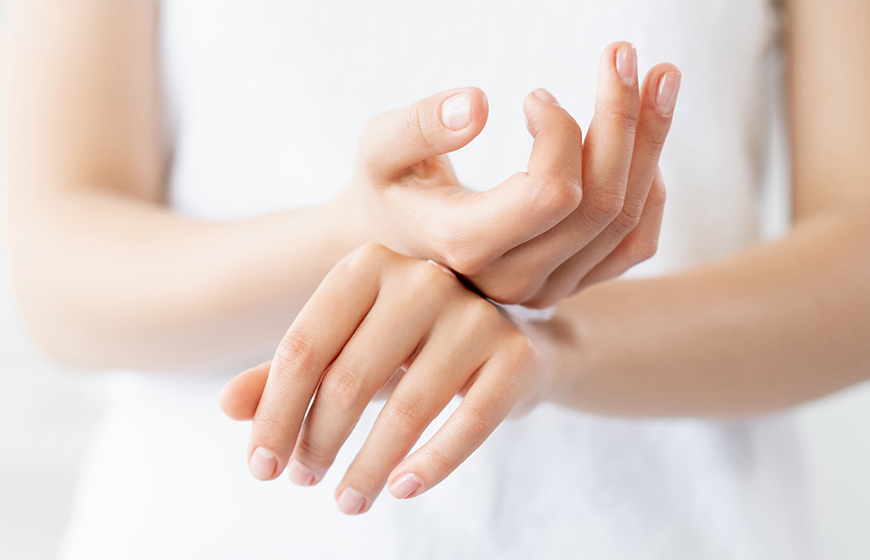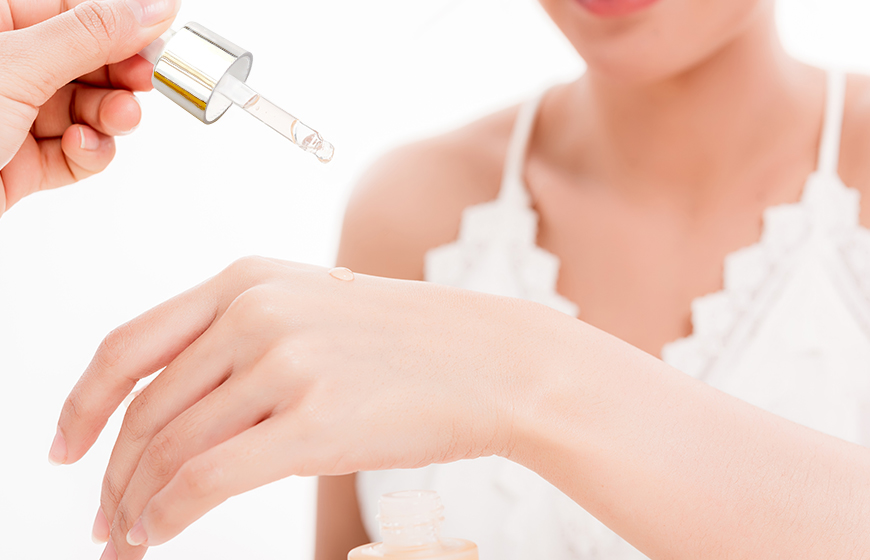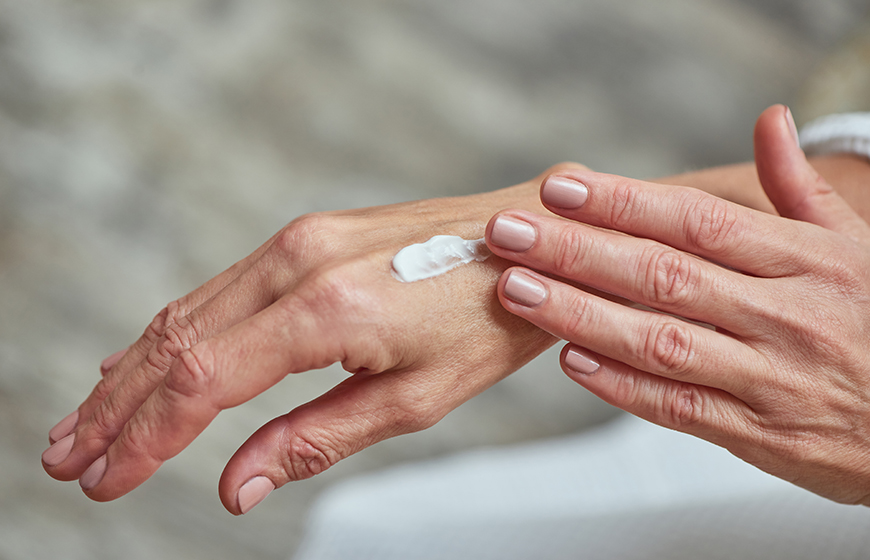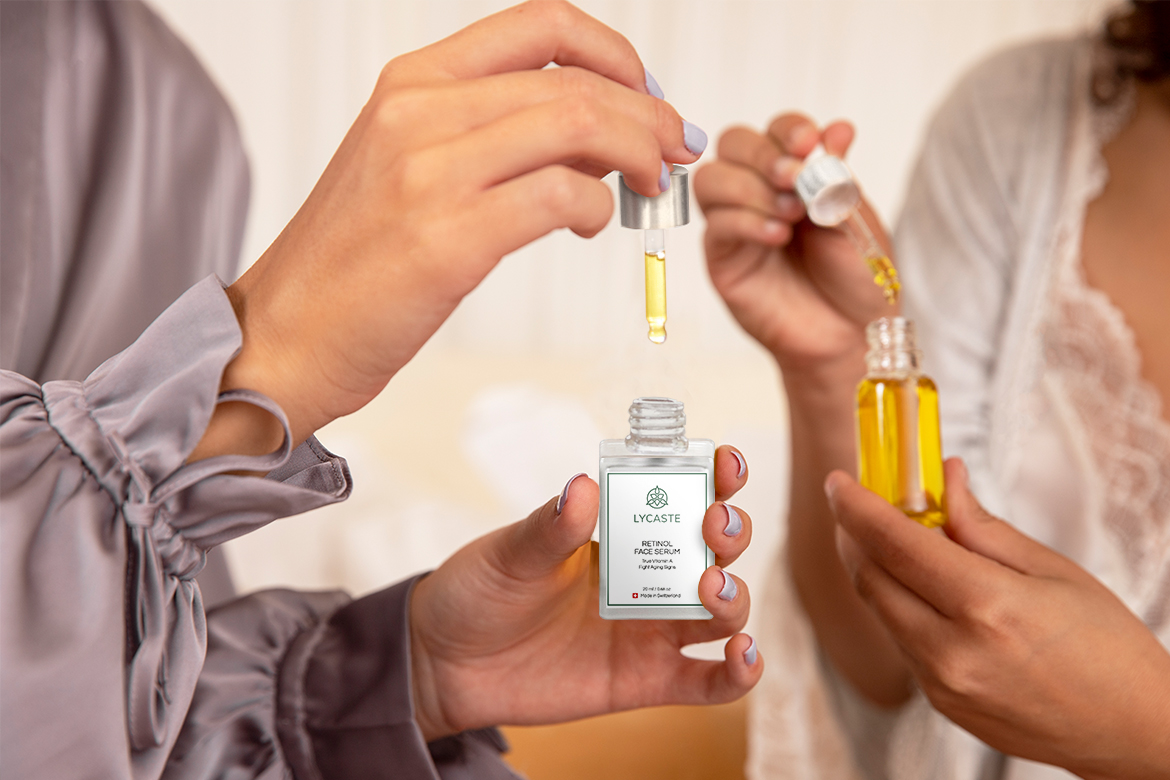- Can you apply retinol to your hands?
- Can retinol make your hands look younger?
- Does retinol work on the back of your hands?
- What is the best treatment for ageing hands?
- How do you get rid of old-looking hands?
Can you apply retinol to your hands?
The majority of experts within the beauty industry focus on the importance of a good skincare routine for your face. The skin on your neck also gets plenty of attention, but what about your hands?
We often forget that our hands are constantly exposed to various chemicals, drying soaps, sunrays, and harsh weather conditions, yet we tend to neglect them. This comes at a cost: our hands start ageing faster than any other part of our body.
If you want more youthful skin, retinol is the ultimate ingredient you should have in your skincare routine, and it can be used on your hands just as effectively as on your face.
Retinol is a vitamin A derivative and its most significant effect is a boost in collagen production. As we age, collagen production slows down, resulting in sagging, dull-looking skin. After we reach the age of twenty-five, collagen production starts to decrease gradually, so we need something to slow this process down and increase collagen production in our cells.
Speeding up the production of collagen, this versatile ingredient restores plumpness and reduces wrinkles and fine lines.
Skin cell turnover, just like collagen production, slows down with time, and any imperfections or hyperpigmentation you might have had become more visible. These signs of ageing cannot fade if the skin cell turnover is too slow because your skin needs new cells to replace the damaged ones. A good retinol hand cream helps with this process, renewing those cells and making any hyperpigmentation or dark spots less pronounced.
Can retinol make your hands look younger?


Our face is protected from premature ageing as well as external factors by the oil glands. The quantity of oil glands on our hands is significantly lower, though, making them more susceptible to damage and ageing as a result.
If you use retinol once daily, you will soon start seeing significant improvements in your hands. By speeding skin cell turnover, this substance improves the overall texture of your skin.
Your hands before retinol and after you start using it regularly will be pleasantly different.
Consistent use of this vitamin A derivative makes the skin bouncy and more youthful, especially if you also protect it whenever you are outside in the sun or cold or doing work around the house.
Taking care of your hands doesn’t need to be a complicated process. You don’t need any special procedures before retinol application. A quality retinol hand cream paired with gentle exfoliation will significantly reduce any harshness, dryness, or dark spots.
Does retinol work on the back of your hands?


Just like the skin on our face and neck, the skin on the back of our hands needs the same protection and care. Retinol is a powerful and very effective ingredient in skincare products and it is not used exclusively for the face.
There are lots of good-quality retinol hand creams out there that rejuvenate the skin on the back of your hands just as well as face creams do on your face.
However, before retinol use, you should know that as a powerful ingredient, it can have some side effects you should be aware of.
Most importantly, retinol must not be used if you are pregnant, trying to become pregnant, or breastfeeding.
It has been proven that oral retinoids – primary vitamin A derivatives – are directly associated with severe birth defects and can cause premature labour. As products that you apply to your skin can be absorbed and can enter your bloodstream, healthcare experts agree that all retinoids should be excluded from your skincare routine while you are pregnant or breastfeeding.
If you have sensitive skin and want to introduce retinol into your skincare routine, apply it twice per week for three or four weeks and if your skin reacts well, you can then use retinol once daily for a better effect.
What is the best treatment for ageing hands?


To minimize the signs of ageing and help your hands recover that much-desired plump and youthful look, the first thing you need is protection.
- Use a good SPF cream not only on your face but on your hands as well, whenever you go out in the sun, and wear gloves in cold weather.
- Apply a moisturizing cream every time after you wash your hands with soap and use gentle soaps that are not too drying.
- Wear rubber gloves whenever you do work around the house, especially if you are using chemicals.
These protective measures alone will significantly improve the skin of your hands, but using good retinol hand creams as well will be a total game-changer.
How do you get rid of old-looking hands?
If you have been neglecting your hands for some time and you understand that they started looking older, it is time to take action.
As we already know, protecting our skin from external factors that cause premature ageing is the first step toward getting rid of old-looking hands.
Use a quality retinol cream once daily and do not ignore moisturizing creams after you wash your hands.
We know that retinol boosts skin cell turnover, but this doesn’t help us to get rid of those dead skin cells and flakes. In this case, exfoliation should do the trick.
Use gentle exfoliants, such as AHA-containing products, that will not harm the skin but will help you get rid of dead skin cells.
If you have a severe case of hyperpigmentation or the veins on your hands are bulging and bother you with their appearance, you might need to use a retinoid. While retinol can be purchased over the counter, a retinoid is a much stronger ingredient, from which retinol is derived, and it usually requires a prescription to be purchased.
It generally takes from four to five weeks to build up your tolerance to retinol, and this period can be longer in case you start using a retinoid.
While your skin is getting used to the newly-introduced ingredient, some redness, itchiness, or flakiness may appear, but it should go away as you start adapting.
Gentle exfoliation and sun protection are crucial at this point. After your skin adapts to the new treatment, you will start seeing considerable signs of rejuvenation.
It is never too late to start taking care of yourself.
